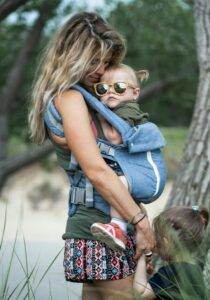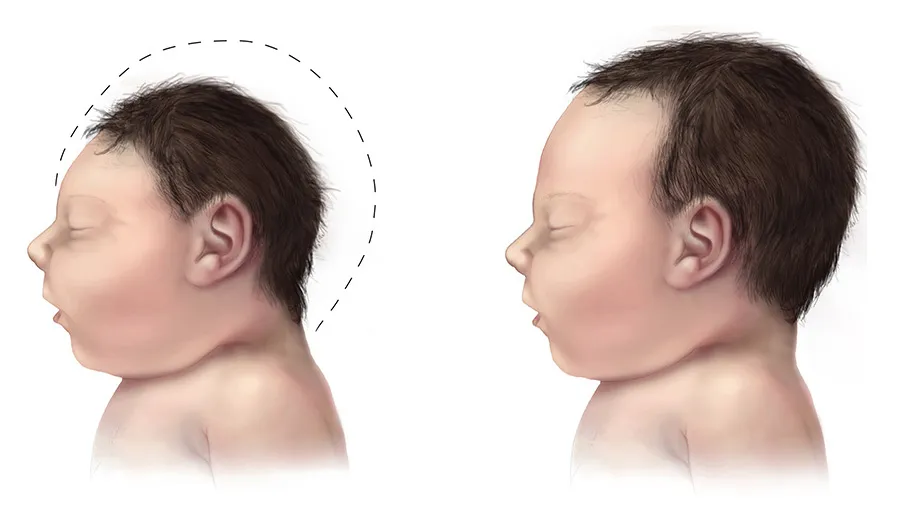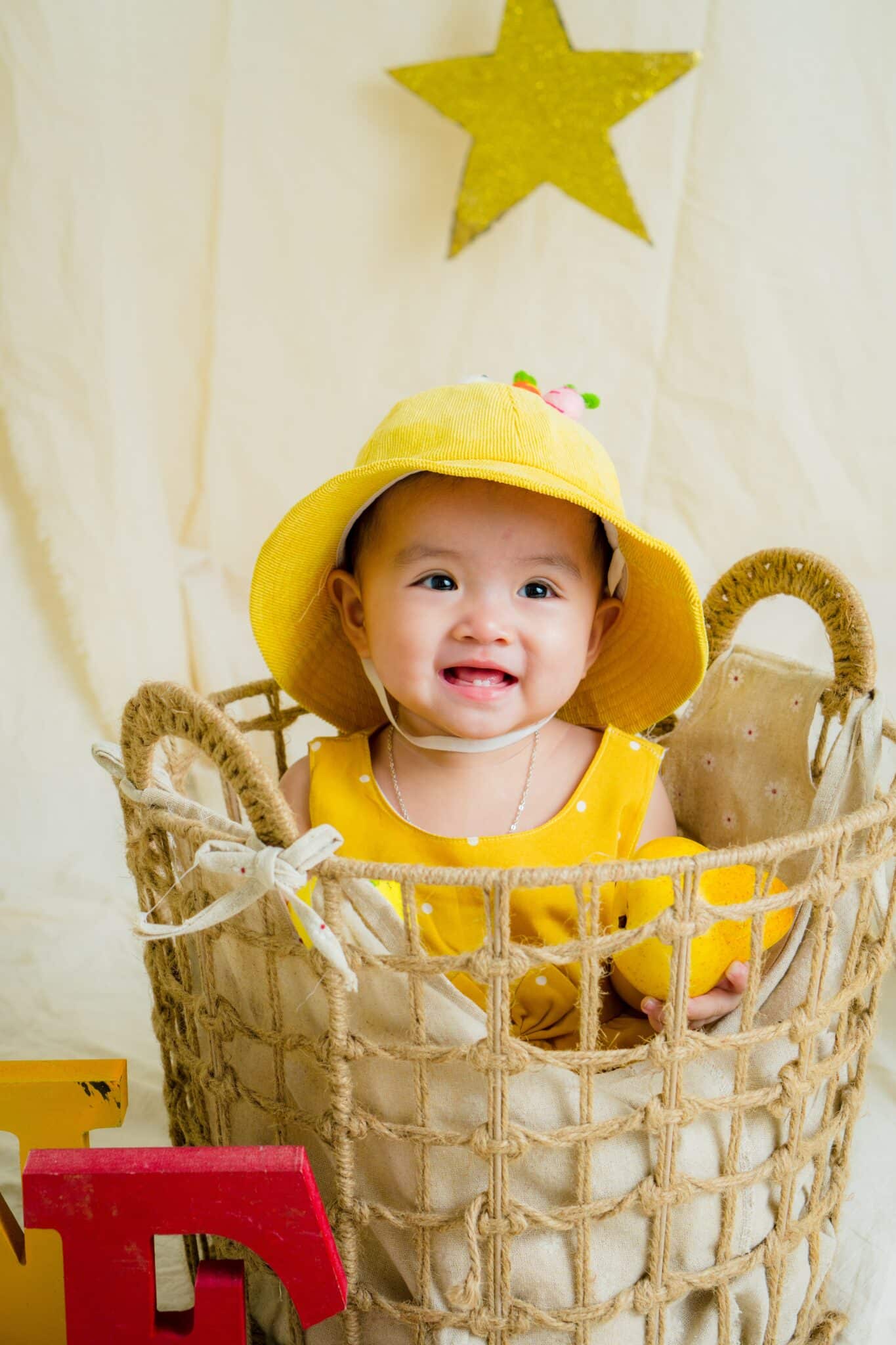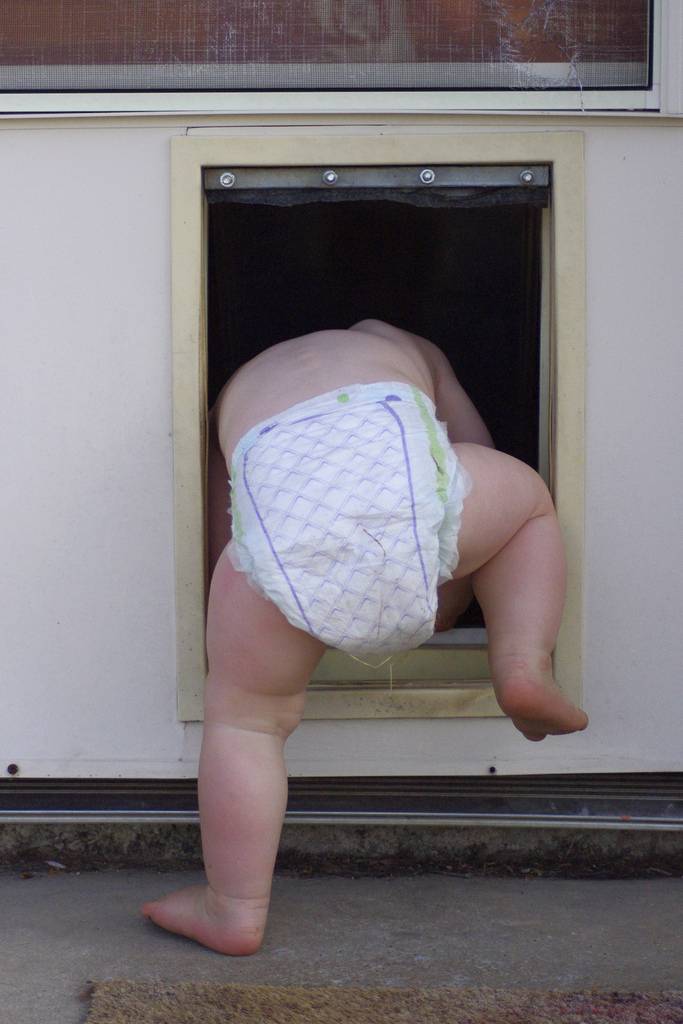Welcoming a new baby into your family is an exciting and joyful experience. However, it also comes with many new challenges and decisions. One practice that has gained popularity for its benefits to parents and babies is babywearing.
In this beginner’s guide, we’ll explore the basics of babywearing, the benefits, and how you can start bonding with your baby through this wonderful practice.
What is Babywearing?
Babywearing is the practice of carrying your baby close to your body using a carrier or sling. This method keeps your hands free while your baby feels secure and comforted. Babywearing has been practiced for centuries in various cultures globally and has seen a resurgence in recent years due to its numerous benefits.
The Benefits of Babywearing
1. Enhanced Bonding
Babywearing promotes a close physical bond between you and your baby. The constant contact helps your baby feel safe and secure, fostering a strong emotional connection. This closeness also enhances your ability to respond to your baby’s needs, leading to a more intuitive and responsive parenting style.
2. Convenience and Mobility
One of the most practical benefits of babywearing is the freedom it provides. With your baby comfortably nestled against you, your hands are free to tackle daily tasks, whether doing household chores, shopping, or walking.
This convenience is especially valuable for parents with multiple children, as it keeps your baby close while attending to other responsibilities.
3. Health Benefits for Baby
Babywearing has positive effects on your baby’s health. The upright position in a carrier helps reduce reflux and colic, as it aids digestion and prevents the backflow of milk. Additionally, the gentle motion of walking soothes a fussy baby and promotes better sleep.
Babywearing also supports healthy hip development since it encourages the natural spread-squat position.
4. Support for Breastfeeding
For breastfeeding mothers, babywearing can be a game-changer. The proximity makes it easier to nurse on the go, providing a discreet and comfortable way to feed your baby. The skin-to-skin contact helps regulate your baby’s temperature and encourage milk production.
Types of Baby Carriers
There are various types of baby carriers available, each with its advantages. Choosing the right one depends on your lifestyle, baby’s age, and personal preferences.
- Wraps: These are long pieces of fabric that you wrap around your body to create a secure pouch for your baby. They can be tied in different ways to suit your comfort and your baby’s position. Wraps are versatile and can be used from newborn to toddlerhood, offering excellent support and a snug fit.
- Ring Slings: These consist of a long piece of fabric with rings sewn at one end. The fabric is threaded through the rings to create an adjustable and secure carrier. Ring slings are easy to use and offer quick adjustments, making them ideal for breastfeeding and for quick trips out of the house.
- Soft-Structured Carriers (SSCs): These are designed with padded shoulder straps and a structured waistband, providing excellent support and weight distribution. They come with adjustable features to ensure a comfortable fit for you and your baby. SSCs are suitable for longer outings and can be used from infancy through toddlerhood.
- Mei Tai: These carriers combine wraps and SSCs, featuring a rectangular body panel with straps that tie around your waist and shoulders. They offer the comfort of a wrap with the convenience of a structured carrier. Mei Tai carriers are versatile and can be adjusted to fit various body types.
How to Choose the Right Baby Carrier
Choosing the right baby carrier involves considering several factors to ensure both comfort and safety for you and your baby.
1. Your Baby’s Age and Size
Newborns require more support for their head and neck, so a carrier that offers a snug and secure fit is essential. Wraps and ring slings are excellent for newborns, while SSCs and Mei Tai carriers can be adjusted as your baby grows.
2. Your Comfort
Since you’ll be wearing the carrier for extended periods, choose one that distributes weight evenly and reduces strain on your back and shoulders. Look for carriers with padded straps and waistbands, and ensure the fabric is breathable and comfortable against your skin.
3. Ease of Use
Consider how easy it is to put on and adjust the carrier. Wraps and ring slings may require some practice, while SSCs and Mei Tai carriers have more straightforward designs. If you’re new to babywearing, start with a carrier that offers clear instructions and quick adjustments.
4. Safety Features
Ensure that the carrier meets safety standards and has been tested for durability. Look for carriers with sturdy stitching, secure fastenings, and proper weight limits. Always follow the manufacturer’s guidelines for safe use, and regularly check for any signs of wear and tear.
Babywearing Techniques for Different Stages
As your baby grows, their needs and preferences will change. Adapting your babywearing techniques to suit different stages of development enhances comfort and bonding.
1. Newborn Stage
In the early weeks, your newborn will need extra head and neck support. Choose a wrap or ring sling that allows a snug, womb-like environment. The front carry position is ideal for this stage, as it keeps your baby close to your chest, allowing them to hear your heartbeat and feel your warmth.
2. Infant Stage
As your baby gains head control, usually around 3–4 months, you can explore different carrying positions. A soft-structured carrier or Mei Tai provides support with more options for positioning. The front carry remains popular, but you also try a hip carry for a different perspective.
3. Toddler Stage
When your baby becomes more curious and mobile, typically around 6 months and older, back carrying becomes a convenient option. Back carries are ideal for active toddlers, providing a great view of the world while keeping them secure.
Soft-structured carriers and woven wraps are excellent for back carries, distributing weight evenly across your shoulders and back.
The Importance of T.I.C.K.S. Guidelines
To ensure the safety and comfort of your baby, follow the T.I.C.K.S. guidelines for babywearing:

- Tight: The carrier should hold your baby tightly against your body, preventing slumping and ensuring proper support.
- In view at all times: Your baby’s face should always be visible, allowing you to monitor their breathing.
- Close enough to kiss: Position your baby high enough that you can easily kiss the top of their head.
- Keep the chin off the chest: Ensure that your baby’s chin is not pressed against their chest, which can obstruct breathing.
- Supported back: The carrier should support your baby’s back in a natural position, with their tummy and chest against you.
Tips for Safe Babywearing
Safety is paramount when it comes to babywearing. Follow these tips to ensure a safe and enjoyable experience for you and your baby.
- Proper Positioning: Ensure that your baby’s airway remains clear at all times. Your baby should be positioned high enough that you can easily kiss the top of their head, and their chin should not be pressed against their chest. The carrier should support the natural curve of your baby’s spine and allow for a spread-squat position.
- Regular Checks: Periodically check your baby’s position and the carrier’s adjustments to ensure everything is secure and comfortable. Your baby’s face should be visible. Dress your baby appropriately for the weather, and avoid using thick blankets inside the carrier.
- Practice Makes Perfect: If you’re new to babywearing, practice putting on and taking off the carrier at home before venturing out. This will help you become more confident and comfortable with the process. Consider seeking guidance from experienced parents or joining a local babywearing group for support and tips.
- Listen to Your Baby: Pay attention to your baby’s cues and adjust the carrier as needed. If your baby seems uncomfortable or fussy, check their position and make any necessary adjustments. Trust your instincts and prioritize your baby’s comfort and safety.
Troubleshooting Common Babywearing Issues
Even with the best intentions, you may encounter some challenges when babywearing. Here are some common issues and tips for resolving them:.
1. Baby Seems Uncomfortable
If your baby appears fussy or uncomfortable in the carrier, check their positioning. Ensure that the carrier is snug but not too tight and that your baby is in a natural, ergonomic position. Adjust the carrier as needed and try different positions to find what works best for your baby.
2. Back or Shoulder Pain
Discomfort in your back or shoulders can be alleviated by adjusting the carrier for better weight distribution. The shoulder straps should be well-padded and the waistband should be positioned correctly. If you’re using a wrap, ensure it’s tied securely and evenly to distribute the weight across your body.
3. Difficulty with Adjustments
If you’re struggling with adjusting the carrier, take time to practice and familiarize yourself with its features. Watch instructional videos, read the manual, and consider seeking advice from experienced babywearers. With practice, adjustments will become more intuitive and quicker.
Babywearing and Everyday Life
Incorporating babywearing into your daily routine makes life with a baby manageable and enjoyable. Here are some tips for maximizing babywearing in various situations.

- Around the House: Babywearing is a great way to keep your baby close while attending to household chores. Whether cooking, cleaning or simply relaxing, having your baby in a carrier allows you to move freely and keep an eye on them. Choose a carrier that’s comfortable for long periods and easy to put on and take off.
- Running Errands: When you’re out and about, babywearing is a convenient alternative to a stroller. It allows you to navigate crowded spaces, public transportation, and uneven terrain with ease. A soft-structured carrier or ring sling is ideal for quick trips, offering comfort and support while keeping your hands free.
- Social Events: Attending social events with a baby can be challenging, but babywearing makes it easier. Whether at a family gathering, a park, or a community event, having your baby in a carrier keeps them close and secure. It also allows you to interact with others while keeping your baby calm and content.
- Exercise and Outdoor Activities: For active parents, babywearing can be incorporated into their exercise routines and outdoor activities. Walking, hiking, and even gentle yoga can be enjoyed with your baby in a carrier. Choose a carrier that provides good support, is suitable for the activity, and always prioritizes safety and comfort.
Babywearing and Emotional Well-being
The benefits of babywearing extend beyond physical convenience and comfort. It also plays a significant role in the emotional well-being of parents and babies.
- Reduce Stress: The close physical contact of babywearing helps reduce stress for you and your baby. The gentle motion and warmth are calming, promoting relaxation, and reducing anxiety. For parents, the ability to soothe and comfort your baby enhances feelings of competence and confidence.
- Enhance Bonding: Babywearing fosters a deep sense of connection and bonding. The constant physical closeness allows you to respond quickly to your baby’s needs, creating a strong foundation of trust and security. This bonding experience benefits parents who may feel overwhelmed or disconnected during the early stages of parenthood.
- Support Mental Health: For parents experiencing postpartum depression or anxiety, babywearing is a valuable tool for support. Close contact and the baby’s presence provide comfort and a sense of purpose, helping to alleviate feelings of isolation and helplessness. It also encourages you to be active and engaged, which positively impacts mental health.
Embrace Babywearing to Bond With Your Little One
Babywearing is a beautiful and practical way to bond with your baby while enjoying the freedom to move and accomplish daily tasks. With the right carrier and following safety guidelines, you create a secure and nurturing environment for your baby.
Embrace the joys of babywearing and experience the many benefits it offers to you and your little one. For more insights on parenting and baby care, check out these informative articles on Omegapediatrics.com. Happy babywearing!






